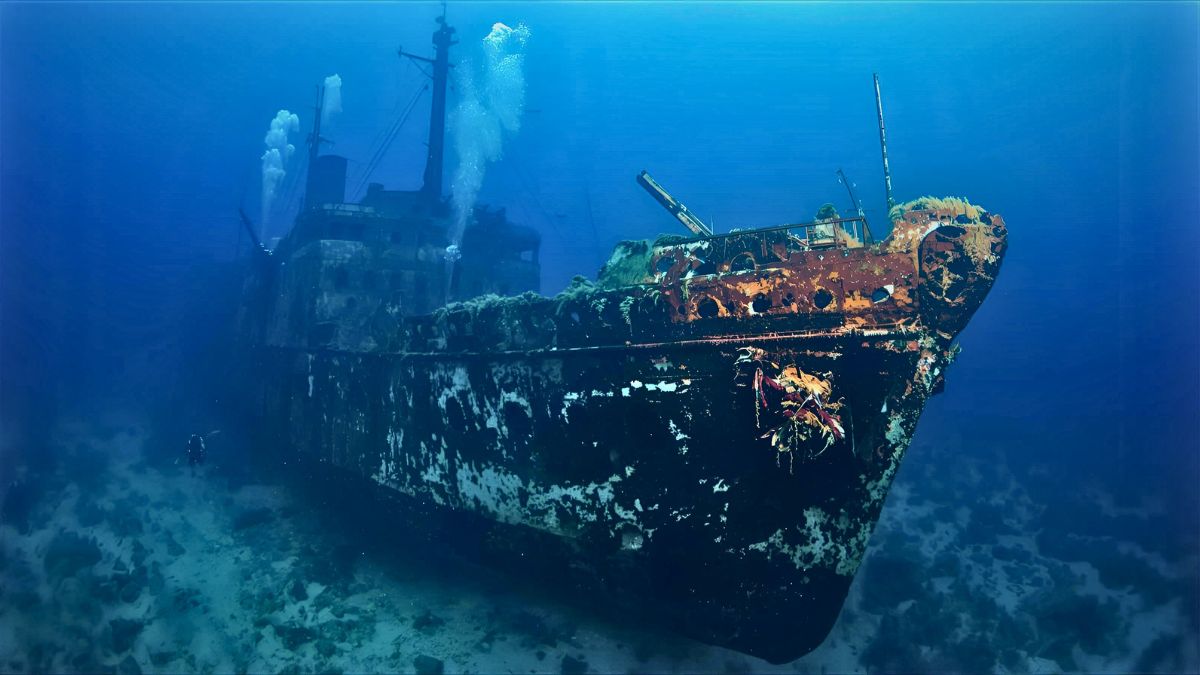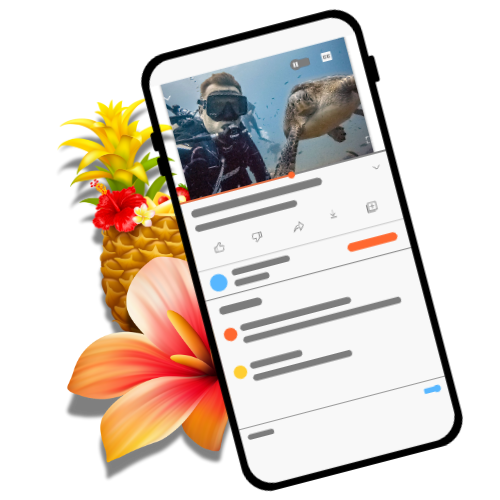Are you ready to take your scuba diving skills to the next level? The PADI Rescue Diver Course is one of the most transformative certifications you can earn as a diver. This isn’t just about learning new techniques, it’s about becoming a more confident, aware, and capable diver who can handle emergencies and help others when it matters most.
Whether you recently completed your Open Water certification or you’re an experienced Adventure Diver, this course will challenge you in the best possible way. In this guide, I’ll walk you through everything you need to know about the PADI Rescue Diver Course, from what you’ll learn to why it’s worth every minute of training.
What Is the PADI Rescue Diver Course?
The PADI Rescue Diver Course is a specialized training program designed to teach divers how to prevent, recognize, and manage dive emergencies. Unlike other certifications that focus on personal diving skills, this course shifts your attention outward. You’ll learn to spot potential problems before they escalate, assist distressed divers, and respond effectively in emergency situations.
This course emphasizes proactive safety and emergency management. By the end of your training, you’ll have the skills and confidence to handle real-world diving emergencies both underwater and at the surface. More importantly, you’ll become a valuable asset to any dive team or buddy group.
The training combines theoretical knowledge with hands-on practice. You’ll study dive accident scenarios, learn rescue techniques, and apply what you’ve learned in realistic simulated emergencies. It’s challenging, but also incredibly rewarding.
Did you know? The PADI Rescue Diver certification is considered one of the most challenging and rewarding non-professional diving certifications. Many divers say it fundamentally changed how they approach every dive.
Why Should You Become a Rescue Diver?
Boost Your Confidence and Safety Skills
Personal Safety First
One of the biggest benefits of the PADI Rescue Diver Course is the confidence it builds. When you know how to handle emergencies, you dive with a completely different mindset. You’re calmer, more aware, and better prepared for anything that might happen.
The course teaches you self-rescue techniques that can save your life. You’ll learn to recognize the early signs of stress in yourself and manage problems before they become serious. This self-awareness alone makes you a safer, smarter diver.
Spotting Problems Before They Escalate
Beyond personal safety, you’ll develop a keen eye for spotting potential issues in other divers. Maybe you notice a buddy who’s breathing too fast, or someone struggling with their buoyancy. With rescue training, you can step in early and prevent a small problem from turning into a major emergency.
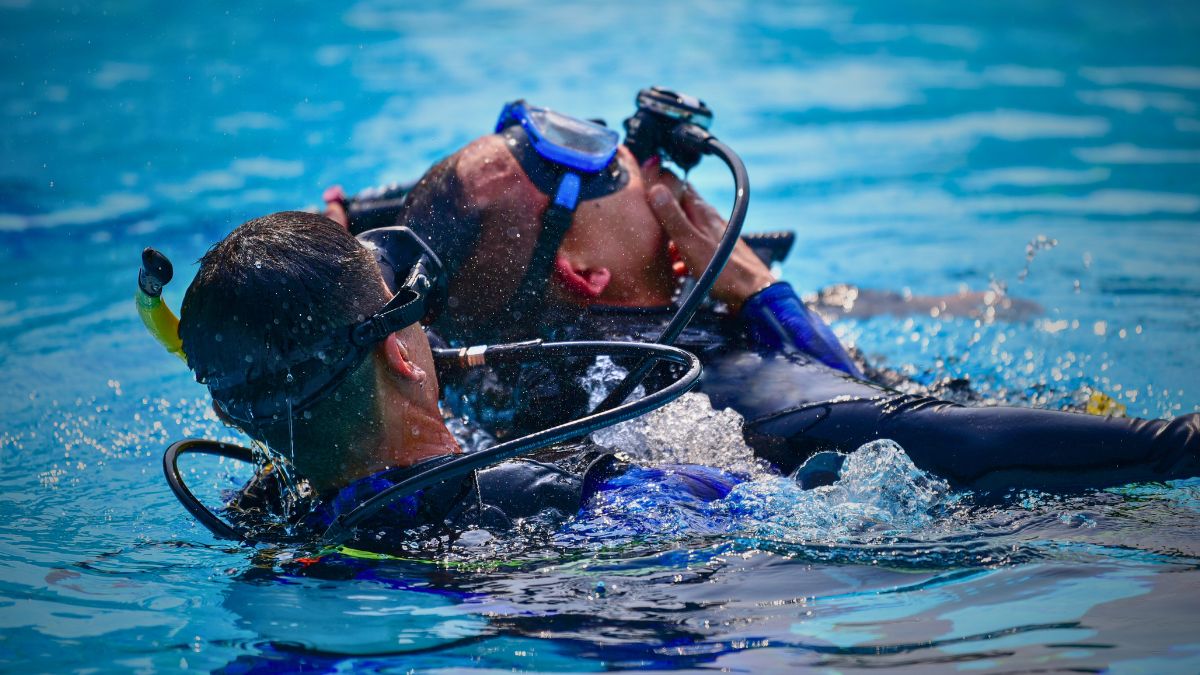
Become a Valuable Dive Buddy
After completing the PADI Rescue Diver Course, you become the kind of dive buddy everyone wants. You’re not just along for the ride, you’re actively contributing to the safety and enjoyment of every dive.
Rescue divers are highly respected in the diving community. Your skills and knowledge make you a trusted presence on dive boats, group trips, and expeditions. Other divers feel safer knowing you’re around, and dive centers often seek out rescue-trained divers for more advanced trips.
The ability to assist a fellow diver in distress is powerful. Whether it’s helping a panicked diver calm down, conducting a search pattern for a lost buddy, or providing emergency oxygen support, you’ll have the tools to make a real difference when it counts.
Step Toward Professional Diving Careers
If you’ve ever dreamed of working in the diving industry, the PADI Rescue Diver certification is a critical step. It’s a prerequisite for the PADI Divemaster course, which is your entry point into professional diving.
Even if you’re not planning a career change, becoming a Rescue Diver opens doors to the elite Master Scuba Diver rating. This prestigious recognition requires 50 logged dives, five PADI specialty certifications, and Rescue Diver training. Fewer than two percent of divers worldwide ever achieve this status.
The course also prepares you for specialty roles like Public Safety Diver or scientific diving positions. The leadership skills and emergency management experience you gain are valuable far beyond recreational diving.
Who Can Take the PADI Rescue Diver Course?
Prerequisites and Requirements
Age and Certification Requirements
To enroll in the PADI Rescue Diver Course, you need to meet a few basic requirements. First, you must be at least 12 years old. Younger divers can earn a Junior Rescue Diver certification with some limitations.
You’ll need a PADI Adventure Diver certification or equivalent from another recognized diving organization. If you’re still working on your Adventure Diver, check out our guide on the PADI Adventure Diver course to understand what’s involved. Your certification must include the Underwater Navigation adventure dive, as navigation skills are essential for search and rescue scenarios.
CPR and First Aid Requirements
Finally, you must have current CPR and first aid training completed within the past 24 months. If your certification has expired or you’ve never taken an Emergency First Response (EFR) course, you’ll need to complete that training before or during your Rescue Diver course.
These prerequisites ensure every student has a solid foundation in basic diving skills and life-saving techniques. They’re not difficult to meet, but they’re important for your safety and success in the course.
Fun fact: Many Rescue Diver students report that the skills they learn extend beyond diving. The stress management, problem-solving, and emergency response training often helps them feel more confident in everyday life situations too.
Do I Need Prior Rescue or Medical Training?
No prior rescue or medical training is required beyond the basic CPR and first aid certification. The PADI Rescue Diver Course is designed to teach you everything from scratch, regardless of your background.
Your instructors will guide you through each skill step by step. You’ll start with simple concepts and gradually build up to complex rescue scenarios. The course is structured so anyone with the prerequisites can succeed, even if you’ve never had emergency training before.
That said, if you have previous rescue experience or medical training, you’ll find the concepts easier to grasp. But don’t let a lack of experience hold you back. The whole point of the course is to give you the knowledge and skills you need to respond confidently in emergencies.
What Will You Learn in the Rescue Diver Course?
Knowledge Development
Understanding Dive Emergencies
The course begins with comprehensive theoretical training. You’ll study the psychology of dive emergencies, learning how stress and panic develop underwater. Understanding these mental factors is crucial for recognizing problems early and responding appropriately.
You’ll explore common dive emergencies and accident scenarios. What happens when a diver runs out of air? How do you manage a diver with decompression illness? What equipment considerations matter most in rescue situations? The knowledge development section covers all of this in detail.
Emergency Planning and Management
Accident management and emergency planning are also key topics. You’ll learn how to assess situations quickly, make decisions under pressure, and coordinate with other divers or emergency services. Understanding proper scuba diving insurance can also provide peace of mind when managing emergencies. This theoretical foundation prepares you for the practical work ahead.

Rescue Skills and Techniques
Approaching Distressed Divers
The practical component of the PADI Rescue Diver Course focuses on developing real rescue skills. You’ll learn how to approach a distressed diver safely, both on the surface and underwater. Proper approach techniques protect you while allowing you to provide effective assistance.
Managing panicked divers is one of the most important skills you’ll practice. Panic underwater can be dangerous, but with the right techniques, you can calm someone down and guide them to safety. You’ll practice these scenarios repeatedly until they become second nature.
Search Patterns and Assistance Techniques
Search patterns are another critical skill. If a diver goes missing, you need to know how to conduct an organized, effective search. You’ll learn different search patterns for various conditions and practice them in open water.
Surface and underwater assistance techniques round out your rescue skill set. From towing a tired diver back to shore to helping someone remove their scuba gear underwater, you’ll learn practical methods for providing help in any situation.
Emergency First Aid and Oxygen Administration
CPR and Basic Life Support
In addition to in-water rescue skills, you’ll receive training in emergency first aid and oxygen administration. This training is essential because many dive emergencies require immediate medical care once the diver is out of the water.
You’ll learn or refresh your CPR and basic life support skills. These techniques can save lives, and practicing them regularly ensures you’ll remember what to do in a real emergency.
Emergency Oxygen Equipment
Emergency oxygen administration is particularly important for dive-related injuries. You’ll learn how to set up and use emergency oxygen equipment, including different delivery methods for conscious and unconscious patients. Learning about emergency oxygen for divers can significantly improve outcomes for divers suffering from decompression illness or near-drowning incidents.
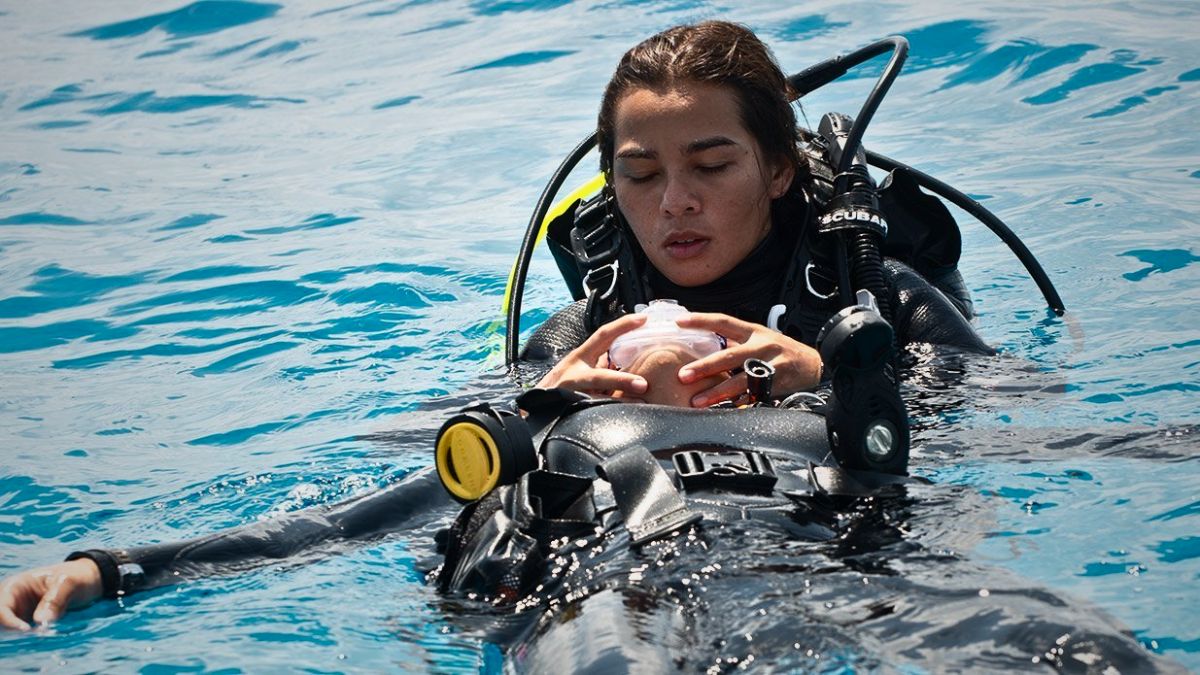
Realistic Rescue Scenarios
One of the most valuable parts of the PADI Rescue Diver Course is the opportunity to practice in realistic rescue scenarios. These scenarios simulate actual diving emergencies in a controlled environment.
You might practice responding to an unresponsive diver at depth, conducting a missing diver search, or managing a panicked diver on the surface. Each scenario challenges you to apply your knowledge and skills under pressure.
These exercises build muscle memory and confidence. When you’ve successfully completed a rescue scenario multiple times in training, you’ll be far more prepared to handle a real emergency if one ever occurs. The scenarios also reveal areas where you need more practice, allowing your scuba instructor to provide targeted feedback.
How Long Does the Course Take?
The PADI Rescue Diver Course typically takes three to four days to complete, though the exact duration depends on several factors. If you need to complete Emergency First Response training as part of the course, add an extra day.
You can complete the knowledge development portion at your own pace using PADI eLearning. Many students finish the online coursework in one to two days before arriving for their practical training. This self-paced option gives you flexibility to study when it’s convenient.
The practical training includes confined water exercises and open water rescue scenarios. Confined water work usually takes place in a pool and lasts about half a day. The open water portions typically span two full days, giving you plenty of time to practice each skill and complete all required scenarios.
Some dive centers offer accelerated schedules or spread the training over weekends to accommodate working professionals. Contact your chosen dive center to discuss scheduling options that work for your situation.
Is the PADI Rescue Diver Certification Recognized Worldwide?
Yes, the PADI Rescue Diver certification is recognized and accepted worldwide. PADI is the world’s largest and most respected diver training organization, with millions of certifications issued globally.
Your Rescue Diver certification card will be honored at dive centers, resorts, and liveaboards around the world. Whether you’re diving in the Caribbean, Southeast Asia, the Mediterranean, or anywhere else, your certification proves you’ve completed comprehensive rescue training.
This global recognition is particularly valuable if you plan to pursue professional diving careers. Dive centers everywhere understand the PADI training standards and trust that PADI Rescue Divers have the skills they claim.
The certification is also lifetime valid. Unlike some first aid certifications that require renewal, your PADI Rescue Diver certification never expires. However, it’s wise to practice your skills regularly and stay current with emergency procedures.
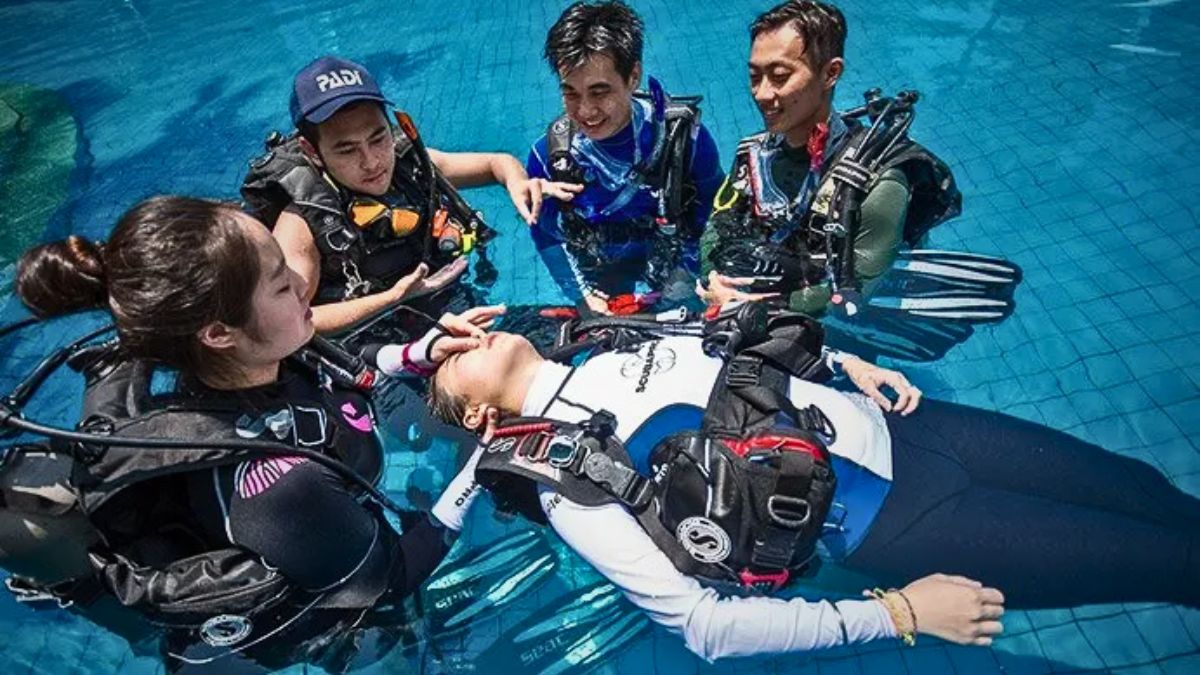
Why Take Your Rescue Diver Course in Costa Rica?
Perfect Training Conditions
Warm Water and Comfort
Costa Rica offers some of the best conditions in the world for Rescue Diver training. The warm tropical waters make practicing rescue skills far more comfortable than cold-water training. When you’re not shivering, you can focus completely on learning and perfecting your techniques.
The excellent visibility in Costa Rican waters helps during practice scenarios. You can clearly see what’s happening and communicate better with instructors and fellow students. This clarity accelerates learning and makes the experience more enjoyable.
Biodiversity and Inspiration
Costa Rica’s diverse marine life adds an extra dimension to your training. While practicing rescue scenarios, you might encounter sea turtles, rays, tropical fish, and other amazing creatures. Exploring the best dive sites in Costa Rica during your training reminds you why diving is so special and keeps you motivated throughout the course.
Expert Training Team
At Costa Rica Divers, you’ll train with experienced instructors who know the local waters intimately. Our small class sizes ensure personalized attention and plenty of one-on-one coaching. We’re committed to not just certifying you, but preparing you to be a truly confident, capable rescue diver.
Frequently Asked Questions
How difficult is the PADI Rescue Diver Course?
The course is physically and mentally challenging, but it’s designed to be achievable for any certified diver who meets the prerequisites. The scenarios can be tiring, and you’ll need to think quickly under pressure. However, your instructor will guide you through each skill progressively, and most students find the challenge incredibly rewarding. The key is showing up with a positive attitude and willingness to learn.
Can I take the Rescue Diver Course if I’m not planning to become a professional diver?
Absolutely. Most Rescue Divers are recreational divers who want to improve their skills and confidence. The training benefits every diver, regardless of career aspirations. You’ll become safer, more aware, and better prepared to help yourself and others. Many divers say Rescue training is the most valuable course they’ve ever taken.
What happens if I can’t complete a rescue scenario during training?
Your instructor will work with you until you master each skill. If you struggle with a particular scenario, you’ll receive additional coaching and practice time. The goal isn’t to rush you through, it’s to ensure you’re genuinely prepared. Some students need extra practice on certain skills, and that’s completely normal. Your instructor wants you to succeed.
Do I need to buy any special equipment for the course?
Most of the specialized rescue equipment will be provided during training. However, you should have your own pocket mask for providing rescue breaths, and a dive light or flashlight is recommended. Your dive center can advise on exactly what you’ll need and often has equipment available for purchase or rental.
How soon after getting my Advanced Diver certification can I take Rescue Diver?
You can enroll in the Rescue Diver course as soon as you complete your Adventure Diver certification with the Underwater Navigation dive. There’s no required waiting period or minimum number of dives between certifications. However, gaining some additional diving experience before Rescue training can be beneficial, as it helps you feel more comfortable in the water and better prepared for the course’s challenges.
Is the Rescue Diver course only about helping other divers?
No, a significant portion of the course focuses on self-rescue and preventing your own emergencies. You’ll learn to recognize stress in yourself, manage equipment problems, and stay calm in challenging situations. These self-rescue skills are incredibly valuable and can prevent problems before they escalate to the point where you need help from others.
Will I actually have to rescue unconscious divers from deep water?
During training, all rescue scenarios are simulated and conducted under controlled conditions. You’ll practice with instructors and fellow students who are acting as distressed or unresponsive divers. The scenarios are realistic enough to build genuine skills, but safety is always the top priority. No one is actually in danger during training exercises.
Final Thoughts: Is the PADI Rescue Diver Course Worth It?
Without question, the PADI Rescue Diver Course is one of the most valuable certifications you can earn. It transforms how you dive, how you think about safety, and how you interact with other divers.
The skills you learn have real-world applications. Even if you never face a serious emergency, the awareness, confidence, and problem-solving abilities you develop will enhance every dive you do for the rest of your life.
Ready to start your PADI Rescue Diver Course in Costa Rica? Contact us today to learn more about our training schedule and take the next step in your diving journey.
Sources and References
This article is based on official PADI course standards and requirements, dive emergency management best practices, and professional diving industry guidelines. Information about course structure, prerequisites, and certification pathways comes directly from PADI training materials and standards. Additional information was verified using the following sources:
- PADI Official Website – Professional Association of Diving Instructors
- Divers Alert Network (DAN) – Diving Safety and Medical Information
- PADI Course Standards and Procedures Manual (latest edition)
- Years of teaching and diving around the world

